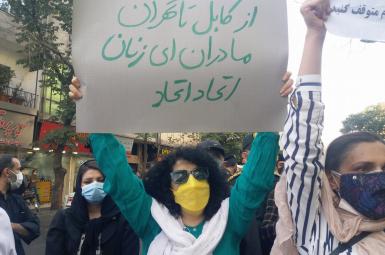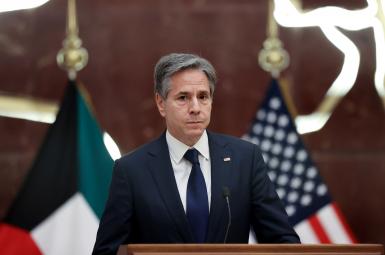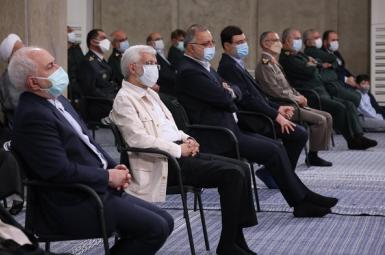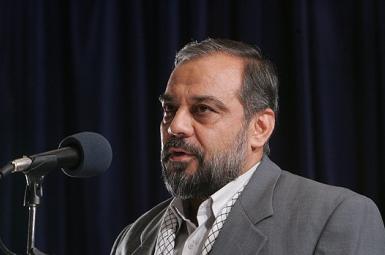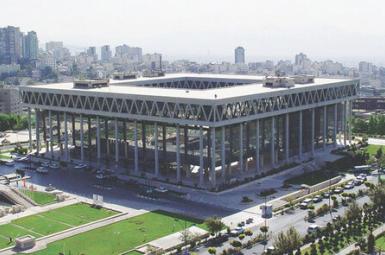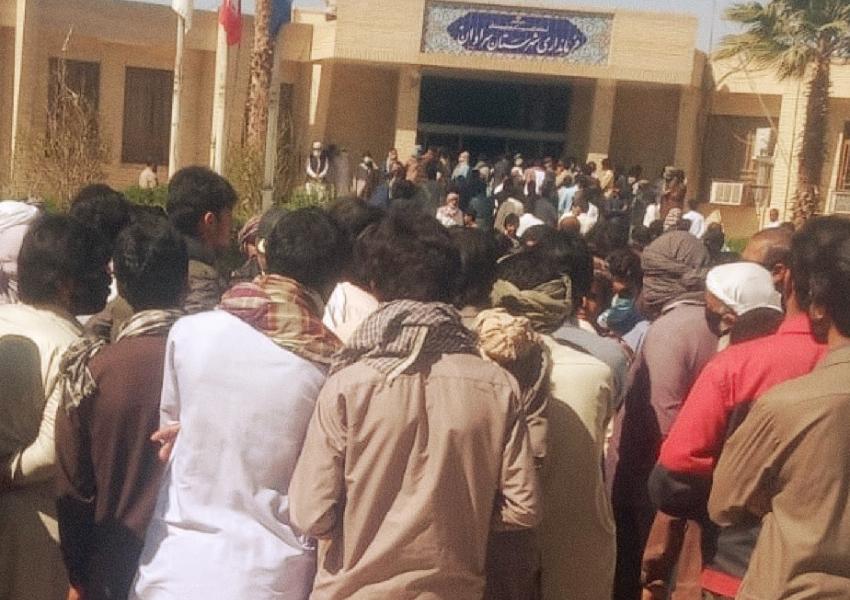
Policeman Reported Dead As Baluchi Unrest Continues In South-East Iran
Unrest continued on Wednesday evening [February 24] in Iran’s south-eastern Sistan-Baluchestan province despite the authorities’ shutdown of mobile internet connections in many areas and the heavy presence of anti-riot police and other security forces.
Protests in the impoverished Sistan-Baluchestan province began on Monday in Saravan, a city of 60,000 near the Pakistan border, after Revolutionary Guards opened fire at a border checkpoint in Saravan district on hundreds of “fuel mules” returning from Pakistan, with unconfirmed reports suggesting at least ten were killed.
On Wednesday evening and in the early hours of Thursday, according to social media postings, protesters burned tires and blocked roads in parts of Zahedan, the provincial capital. Postings also alleged shooting at protesters and several wounded in the city’s Karim-Abad district.
Earlier on Wednesday, protesters attacked a police station at Sarjangal, a town of less than 2,000 in Kurin district, near Zahedan, and torched a police car. Gunfire could be heard in a video posted on Twitter of the police station. Unrest in Sarjangal, with more gunshots, continued on Thursday, social media postings say. According to unconfirmed social media reports, an adolescent named Hossein Mohammad-Zehi was shot dead by security forces at Ghal-e Bid, a village, in the Kurin district on Wednesday.
Security forces fire at protesters prior to the storming of their base in Kurin.
Officials who mainly kept silent over events in Sistan-Baluchestan until Wednesday, claimed by Thursday to have the situation under control. Speaking to reporters Abouzar Mehdi Nakhaei, city governor of Zahedan, said attackers had been pushed back from police stations at Kurin and Ghal-e Bid, but that a police officer had been killed. Nakhaei said “mercenaries” had used grenade launchers and other firearms in the attacks.
Officials have also blamed Pakistani border guards for starting the shooting at the border on Tuesday that sparked the protests and riots. On Wednesday, the presidential chief of staff Mahmoud Vaezi suggested the shooting had started in Pakistan and then spread to the Iranian side of the border.
The influential Sunni leader and Zahedan Friday prayer leader, Abdolhamid Esmail-Zehi, in a statement on Wednesday condemned the killing of fuel mules and called for the prosecution of those responsible. Esmail-Zehi urged protesters to keep calm and not attack police stations and other public buildings.
In a letter to the United Nations Human Rights High Commissioner Michelle Bachelet on Wednesday, the Defenders of Human Rights Center (DHRC) urged an “immediate investigation of the Islamic Republic’s violent policies and security forces’ killing of people.” The DHRC, an outlawed organization headed by Iran’s Nobel Peace Laureate Shirin Ebadi, said that shooting people forced by poverty to become “fuel mules” evoked the “savage killing” of those protesting against higher gasoline prices in November 2019.
Despite the 2019 price increase, Iran has far cheaper gasoline and other fuels than its neighbors, which makes smuggling lucrative. Afghan opiates, and refugees hoping to reach Europe, come the other way, into Iran from Pakistan and Afghanistan.
Sistan-Baluchestan faces problems not just with drug cartels, but environmental degradation and drought. Poverty has exacerbated religious and ethnic issues, while militant Sunni groups move between Iran and Pakistan. Baluchi representatives have long argued the mainly Sunni Baluchis suffer both religious and ethnic discrimination, with mainly Shia Sistanis favored in government employment.

